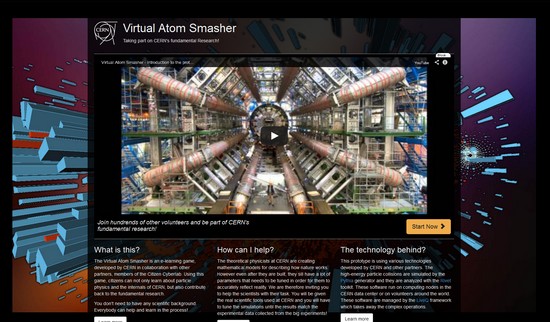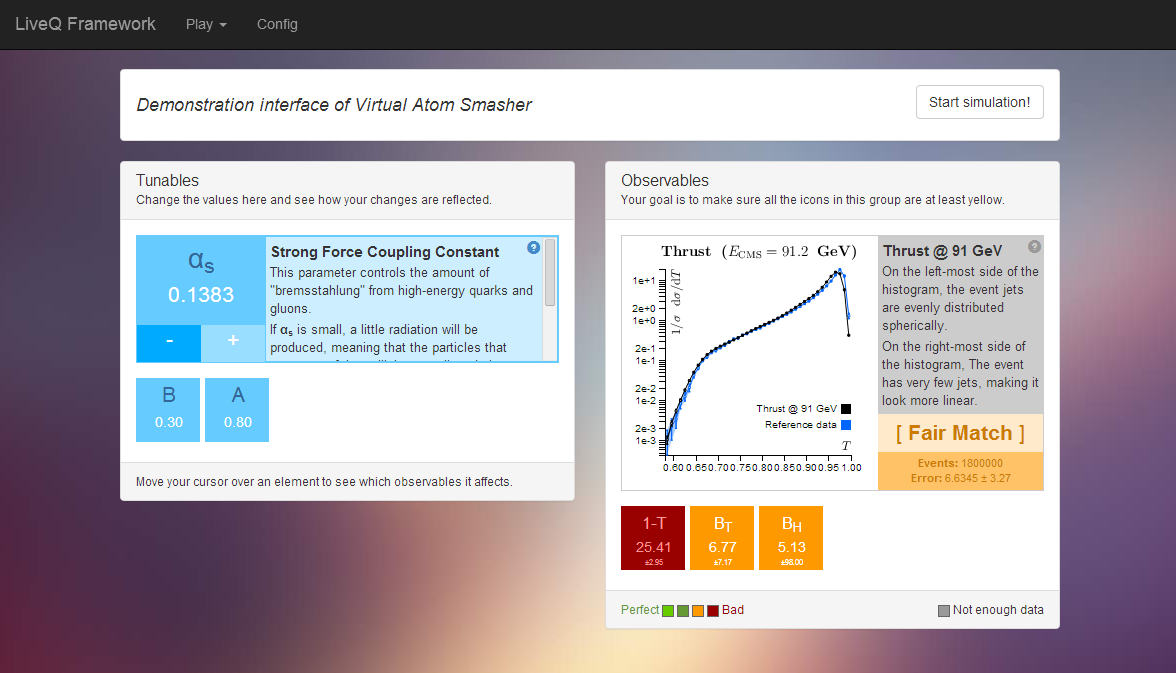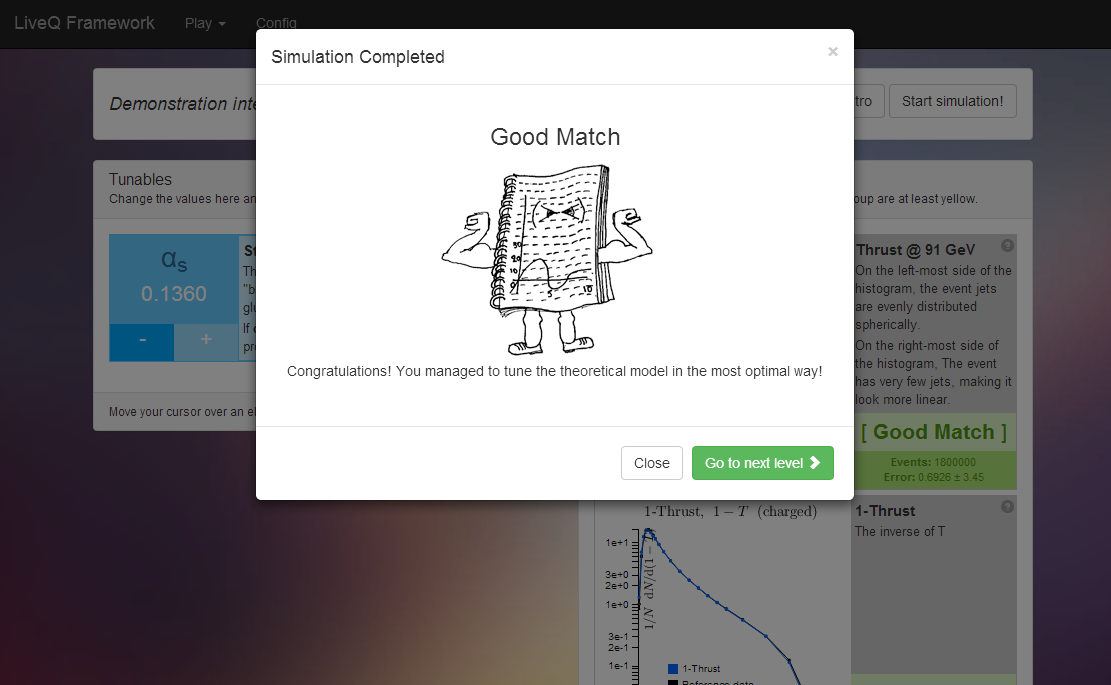Virtual Atom Smasher: contribute to CERN's scientific discoveries

Theoretical physicists at CERN are testing different theories that describe the nature of the particle world and their interactions in subatomic level. They create mathematical models that describe the theories and they use them to simulate high-energy particle collisions. The software used for this process are called “event generators” and are enormously complex, as current quantum field theory does not allow for exact solutions. Based on Markov-Chain Monte Carlo, the event generators encapsulate the most detailed understanding of the high-energy interactions.
The price that one has to pay for this is the computational resources and time that is needed in order to run full simulations at a very high precision. Each time an event generator is updated the quality of the overall modeling and the constraints on the free parameters should in principle be re-evaluated; a computing-intensive and time-consuming task.

Sophisticated calculations and need for high accuracy typically also require enormous computing resources. Virtual Atom Smasher will allow volunteers to contribute in physicist's effort to test between different theories and compare them with experimental data.
Peter Skands, a theoretical physicist at CERN who leads the project says: “Physicists have to run the simulations thousands of times, testing for different parameters and trying to find the values that will produce the most accurate simulations. This is where volunteers can help”. The achievable accuracy of particle physics simulations depends both on the sophistication of the simulation itself, driven by the development and implementation of new theoretical ideas, but it also depends crucially on the available constraints on the free parameters of the models. Using existing data to constrain the latter is referred to as 'tuning'.
The team recently presented the first prototype of a virtual collider, the “Virutal Atom Smasher”. It's a "volunteer thinking", educational game platform that everybody could use, without any prior knowledge of particle physics. It is using the actual event generator software, written by the physicists and they produce scientific data analogous to those generated by the four LHC experiments. Ioannis Charalampidis, a computer scientist who joined the Theory Division to work in the development of the new game thinks that: “A lot of effort has been placed in creating an educational; and easy-to-use interface. Creating an intuitive interface to the real simulations software that is used by theorist was key for the success of the project. This introduces the users to the real world of particle physics, and makes everybody an active member of the CERN community; they can play with real physics and run simulations in the same way that scientists at CERN do”.

The first beta version of the Virtual Atom Smasher will be released later during this year. Stay tuned and help tparticle physicists in their next discovery.

The goal is to tune the parameters of the virtual collider trying to match the experimental results. Volunteers are asked to compare their results with experimental data collected from the LHC and past accelerators and correct the model parameters accordingly.

In that sense the “Virtual Atom Smasher” has a twofold aim as it will offer fun to the users while at the same time educate the player and help in creating useful scientific output.
Ioannis explains: “For the first stage of our prototype, we focused the development on the server-side. Our goal was to simplify the interaction with the simulation software and to reduce the time between the moment the user submits a tune and the moment he is presented with some data. The result was a new batch system that enables bidirectional, real-time interaction with the running jobs through a simple web API. We also developed the basic concepts of the user interface, which demonstrate how the final prototype will look like”.
The game itself is a web application that runs in a browser window. It exploits the latest HTML5 technologies to provide a responsive, easy to use interface. The computational power for the simulations is partially provided by CERN, while the main source is expected to be the volunteers themselves. Using the latest micro-CernVM flavor of the CernVM Virtual Machine we have greatly reduced the download overhead, making it easier for a volunteer to start a computing node in his/her machine.
A public beta version will be realeased by the end of 2014 giving to thousands of users the opportunity to get involved in the research undertaken at CERN and help scientists answering some of the fundamental questions in particle physics research.
Read more
